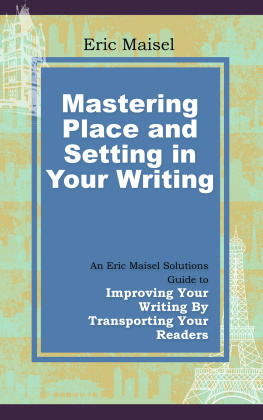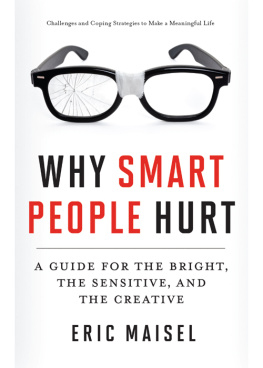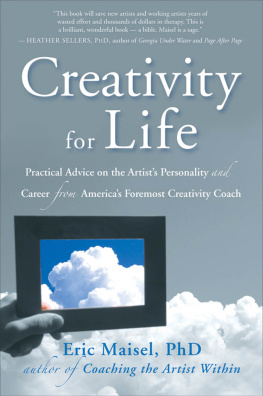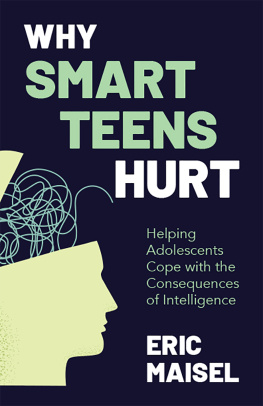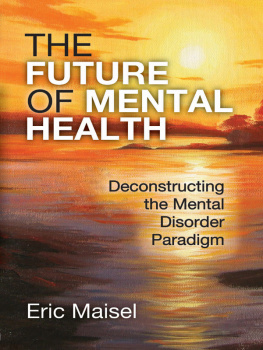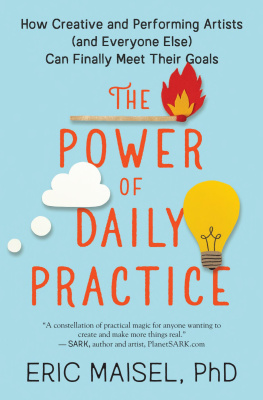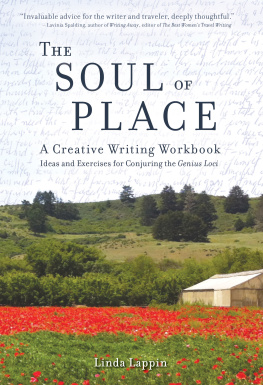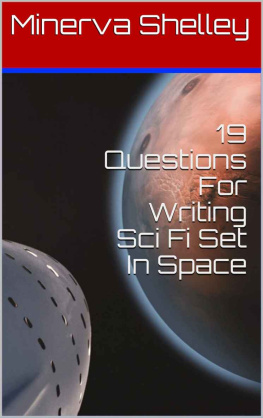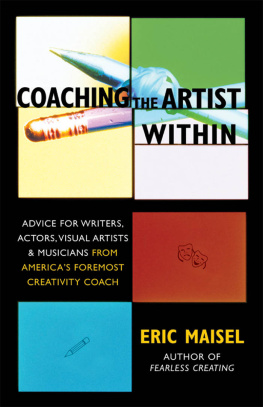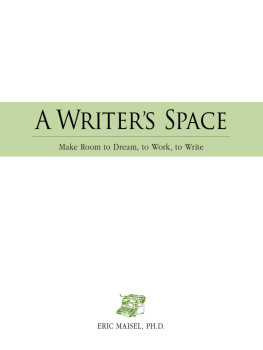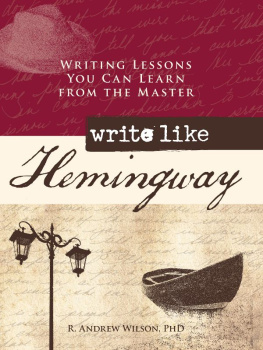MASTERING PLACE AND SETTING IN YOUR WRITING: An Eric Maisel Solutions Guide to Improving Your Writing By Transporting Your Readers
Eric Maisel, Ph.D. Eric Maisel, 2016, all rights reserved.
To learn about other ERIC MAISEL SOLUTIONS GUIDES please visit http://www.ericmaiselsolutions.com
**
Chapter 1.
Creating Intentional Worlds
In this guide Id like to give you the opportunity to think about how you might use place in your writing. By place I mean setting but I mean something more than setting. Real places, like the Brooklyn of my youth, Paris where I visit frequently, or San Francisco, where Ive lived most of my adult life, are rich in idiosyncratic resonances and when we make use of such places we are adding both richness and meaning to what we write. Imagined places are wonderful but real places have something special going for them. Lets explore this!
I grew up in Brooklyn. I can picture the Brooklyn of my childhood and youth with photographic clarity. I can also picture with great clarity places I have never visited: the Algeria of Albert Camuss childhood, as he described it in The Last Man, the pastoral England of Thomas Hardy, the New England whaling world of Herman Melville, the southern small town feel in Harper Lees To Kill a Mockingbird. The richness of these settings is a gift to readers. They allow us not only to travel in imagination, which is no small joy, but they help us fathom what we want our life to mean.
By inhabiting an authors St. Petersburg, Paris or Savannah for a few hours we rework our understanding of the universe. We augment our understanding of class and privilege as we read about tea served from a silver samovar. We change our mind about how much personal space we need as we live with a character in her under-the-eaves Paris studio. We recalibrate our conception of race relations as we attend an all-white private club luncheon waited on by an all-black wait staff. We are not in the real St. Petersburg, Paris or Savannah: we are in a place the author has created, learning what the author intends us to learn.
Setting in this sense is place and time and much, much more. That more includes the authors mind, heart, and intentions. The setting of a piece of writing, whether fiction or nonfiction, poetry or prose, is never some realistic snapshot of a place, as no such realistic snapshot exists. If you were to try to describe with the utmost accuracy every structure in a cityevery hovel, every mansion, every church, every shop, every bridge, every government buildingand then went on to describe every stitch of clothing, every piece of furniture, every custom, every meal, every parade, you would still not have captured anything essential about life. We would still not know what it felt like to be an abstract painter in Greenwich Village in the Forties, for example, or, further uptown, what life was like for a young African-American girl growing up during the Harlem Renaissance.
Even if you attempted the odd, unrewarding task of naming everything you could possibly name, you would only have produced some massive and perhaps amazing inventory without, however, doing anything of human interest. You would not have increased our actual understanding or moved us even slightly. To increase our understanding and to move us, your task is a very different one from realistic description.
Your task is to create a world that serves your intentions. Whether you are writing fiction or nonfiction, whether place is integral to your novel, your memoir, your travel guide, your history, or your biography, your job is to extract from what is real and add what is imagined. By extracting the real and adding the personal, just as a painter extracts and adds as he faces a lush landscape, you create something rich, resonant, and artful.
As a young reader, place no doubt gripped you. You wandered with Huck, Jim, and Mark Twain down an imagined Mississippi through an imagined America. You sat in a dreamy, leafy wood with a sleepy Alice, as shocked as she was when the White Rabbit bustled by with no time to spare. Maybe it was the Paris of Madeleine, the Transylvania of Dracula, the Illinois of young Abe Lincoln, or the moon of space exploration. You traveled intensely, blissfully, and vicariouslybecause a writer took you somewhere. Now you too can take your readers somewhere. You can take them, young and old, to the worlds you create. And, as you do, you yourself will be transported! That is the great joy of writing about place. Every world you create is a world that you yourself can inhabit and love.
Pick a place that you might like to write about, set a story in, or use as backdrop: San Francisco, Beirut, a Midwest town, a Catskills resort, a desert oasis, etc. Once you have your place in mind, ask yourself the following question: What is my intention for that place?
You might find yourself answering in one of the following ways:
I want to communicate something about the way this place has changed and get at something about how the world has changed.
I want to communicate something about the way this place has remained the same and get at something about how nothing really changes.
I want to explore why I am (happy, sad, excited, bored, restless, thrilled, despairing, ecstatic, etc.) when I am in this place.
I want to get at my thoughts about (current politics, culture, spirituality, history, my family, my childhood, etc.) using this place as a backdrop, metaphor, or container for those thoughts.
I want to (celebrate, excoriate, praise, condemn, etc.) the people who live in this place.
I want to (satirize, eulogize, dramatize, etc.) modern life, using this place as a vehicle for (satire, eulogy, drama, etc.).
I want to express a variety of personal opinions, using different aspects of this place as containers or metaphors for those opinions.
I want to communicate my feelings of (joy, wistfulness, etc.) using this place as a container for those feelings.
I want to explore the profound subject of (evolution, race relations, postmodern vacuum, etc.) using this place both as a backdrop and an example.
I want to communicate something about my journey (as a concert pianist, as a new parent, as a political activist, etc.) against the backdrop of this place.
I want to make this place the star.
I want to make the people of this place the star.
I want to make my thoughts central and use this place for flavor.
See if you can articulate your intention for your place. It is no problem if you cant, but see if you can. Then try your hand at writing a 500- to 1500-word piece that matches your intention. See what happens! If you dont yet have an intention with respect to your place, if you have a vague one but cant quite discern what it is, or if you prefer not to work with an intention but just let it happen, then take as your exercise the following: write a 500- to 1500-word piece of any sort employing your place. Maybe you will discern the intention after the fact!
Lets do a little reading! The following small excerpts are primarily from novels. Lets get a feel for how authors use place and setting in what they write.
Djuna Barnes, on Greenwich Village, from Greenwich Village As It Is
Why has Washington Square a meaning, a fragrance, so to speak, while Washington Heights has none? The Square has memories of great lives and possibilities; while the Heights are empty, and Fifth Avenue is only a thoroughfare The greater part of New York is as soulless as a department store; but Greenwich Village has recollections like ears filled with muted music and hopes like sightless eyes straining to catch a glimpse of the beatific vision.
Next page
